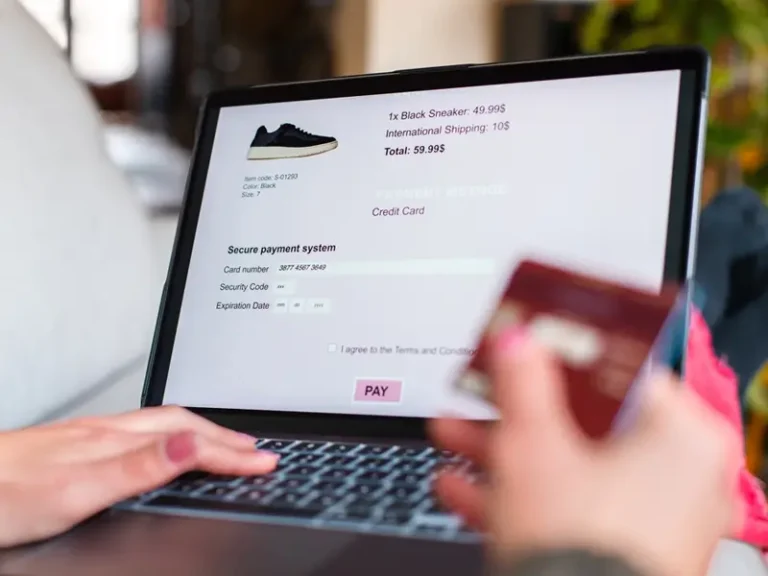This is the first in a series of posts about localised checkouts, why they’re essential for international ecommerce, features to look for in a localised checkout and payment solution and how you can grow your international business by implementing the right system. Read Key Features of a Localised Checkout Solution and Enhanced International Ecommerce Solutions that Grow Global Business too.
Imagine this. You walk into a Dublin pub, excited to try it for the first time. You’ve heard great things about the food and drink and the atmosphere. The bartender gives you a menu, and you are surprised to see that the menu is in Mandarin and the prices are in renminbi.
You ask the bartender if you can see a menu in English (you’re in an Irish pub in an English-speaking country, after all). The bartender says no. The menu is in Mandarin because Mandarin is spoken by the most people on Earth – 941 million Mandarin speakers compared to only 380 million English speakers. The bartender goes on to say that you can use your phone to convert prices from renminbi to Euros and pay with a card – physical Euros aren’t accepted.
Do you stay or do you leave?
Without a localised checkout, your international ecommerce shoppers have essentially the same experience as you had in the imaginary pub scenario. While they might be able to use an online translation tool to read product descriptions and convert currency, they are confused and uncertain and will probably abandon their carts.
But it doesn’t have to be that way. Localised checkouts benefit you and your shoppers and lead to higher conversion rates, loyal customers and more revenue.
What is a Localised Checkout?
There’s a lot of jargon in retail and commerce. So what are we talking about when we talk about a “localised checkout”?
Frictionless Frontend
A localised checkout can be changed and customised best to serve the needs of shoppers in each individual market and localise the shopper experience. That means when shoppers in global markets complete their purchases, they have the same experience that they do when shopping with brands in their home markets.
To achieve this level of localisation in every single market, you’ll want to make sure you provide:
- Local currencies
- Accurate delivery dates
- Accurate final costs (including duties and taxes)
- Local address formats and fields
- Locally preferred payment methods
A localised checkout solution shows customers in different markets what they need to see to confidently complete their purchases.
Robust Backend
A localised checkout also means that features and integrations are flexible for all the teams involved with international ecommerce channels.
- Marketing needs to collect shopper information for future targeting campaigns via marketing opt-in features (while adhering to local privacy regulations).
- The ecommerce team needs a localised online payment system to use the best payment gateway for ecommerce in every market.
- Operations need a checkout that can scale quickly and efficiently into new markets. The checkout must also handle the volume and velocity of orders during peak seasons or events.
- The tech teams need a checkout with seamless integrations with your storefront and other existing tools like site analytics.
- Finance needs access to data to analyse pricing structures in multiple markets.
Why is Checkout Flexibility and Localisation Essential?

Checkout localisation isn’t merely about translating some copy and implementing the right payment solution. It’s about crafting a shopping experience that meets customer expectations, regardless of geography, language or purchase methods. Here’s why it’s crucial:
- Reduced Cart Abandonment: The average cart abandonment rate is 70%. The best way to reduce this rate is with cart abandonment solutions that include transparent pricing, express payment methods and quick checkout paths.
- Global Payment Acceptance: Local acquiring, accepting payments in local currencies and supporting region-specific payment methods make global expansion seamless.
- Customer Satisfaction: Buyers want convenience and confidence that the brand understands who they are. From auto-filled address fields to localised text, a smooth checkout experience keeps them coming back.
- A Competitive Edge: Stand out by offering your international customers personalised and efficient ways to pay. Shoppers will choose you over your competition if they have the same experience with your brand as they do with a domestic one.
- Cross-Border Appeal: Enabling local currencies, tax calculations and globally accepted payment options simplifies cross-border challenges. When you have solutions that can scale in new markets, it becomes easier to reach new customers.
- Higher Conversions: Fast, reliable checkout systems mean fewer roadblocks, resulting in higher conversion rates. Converting shoppers at the checkout is the key to successful international ecommerce and flexible solutions that let you localise in each market and increase conversions. In fact, 72% of shoppers are more likely to purchase from online stores presented in their local language.
Get Started with Localised Checkout and Payments
Localised checkout and payment solutions are good for you and good for your shoppers. This is especially true when you’re expanding ecommerce internationally and entering new markets. If you’re ready to explore options or talk about your goals, reach out and let’s talk about how to increase conversions and profitability around the globe.
Check out parts two and three of our localised checkout guide.





